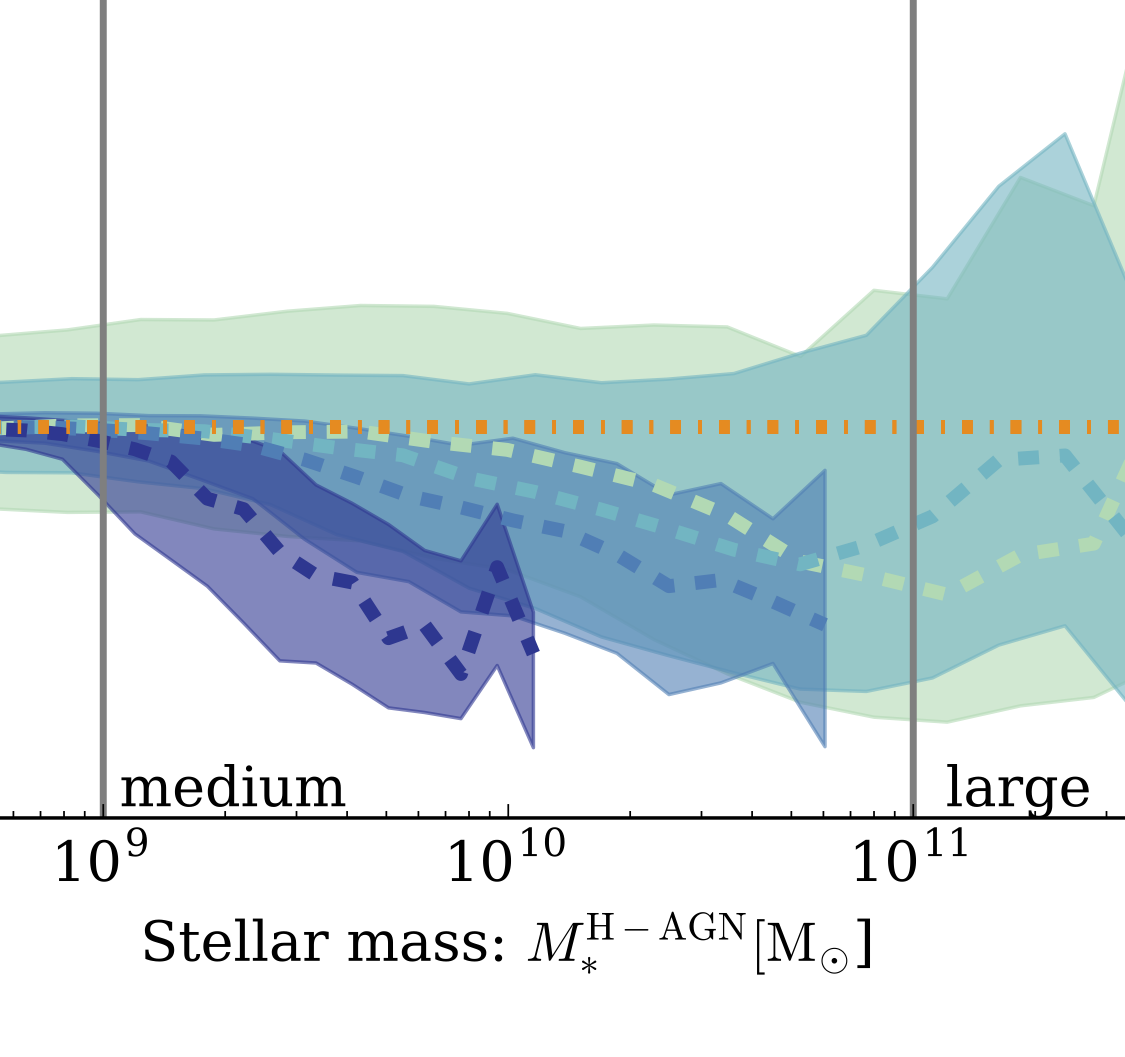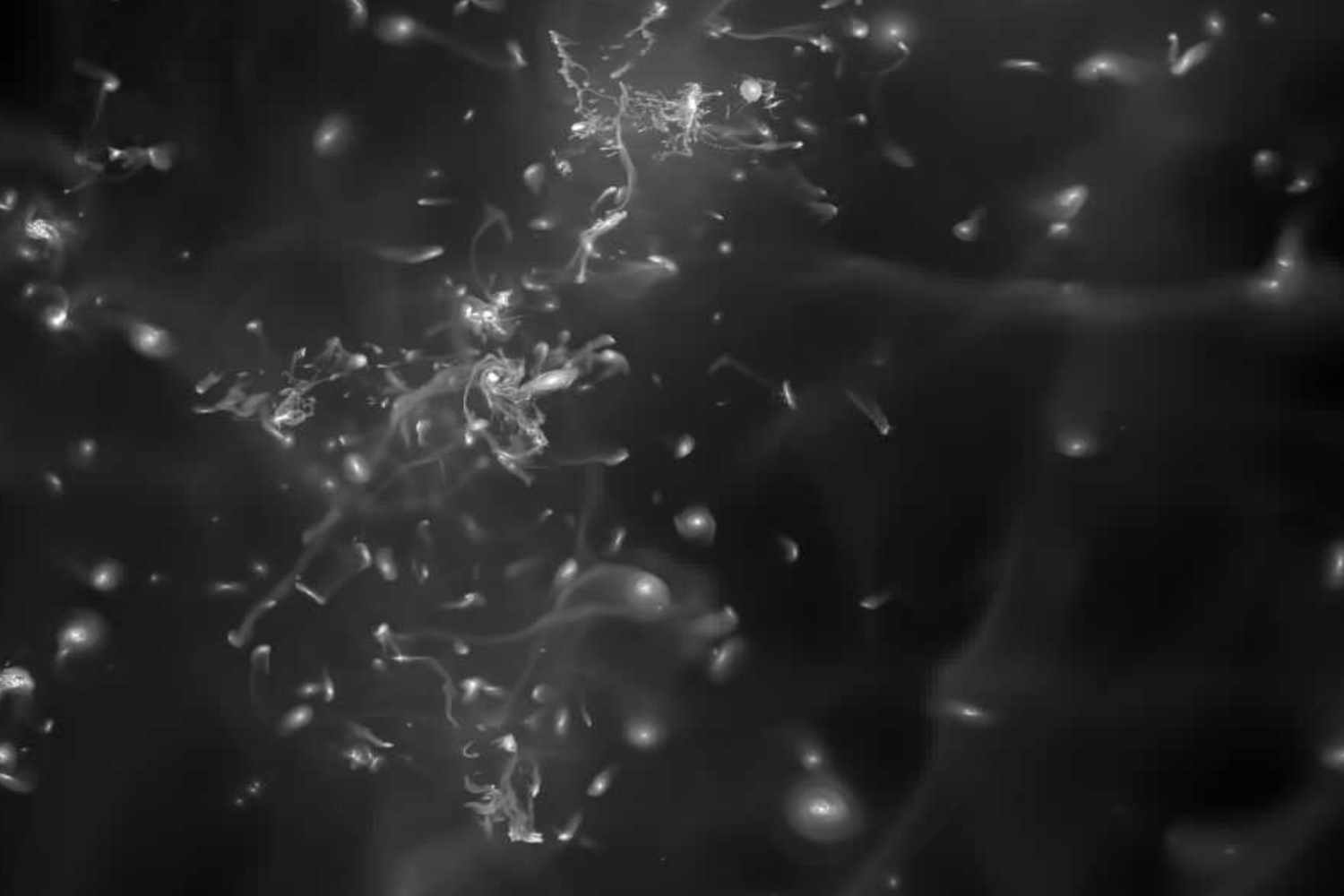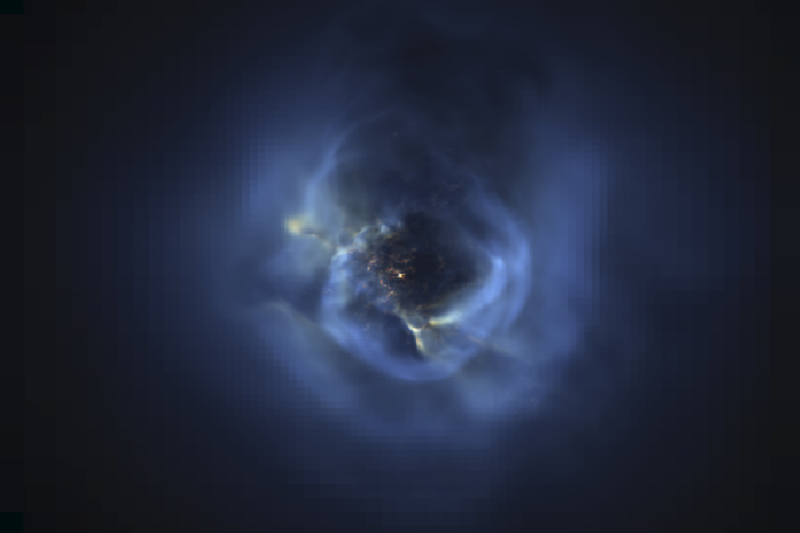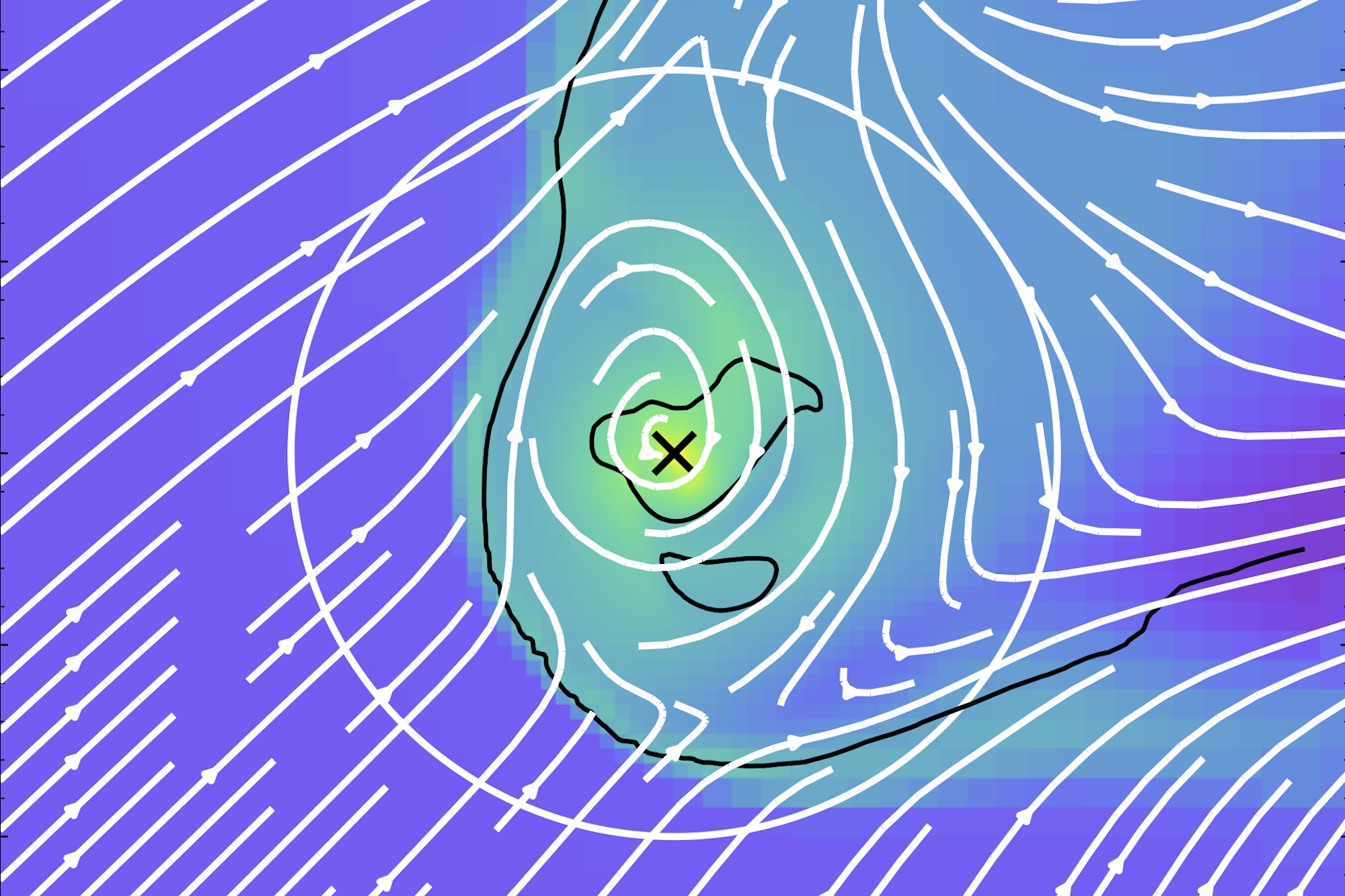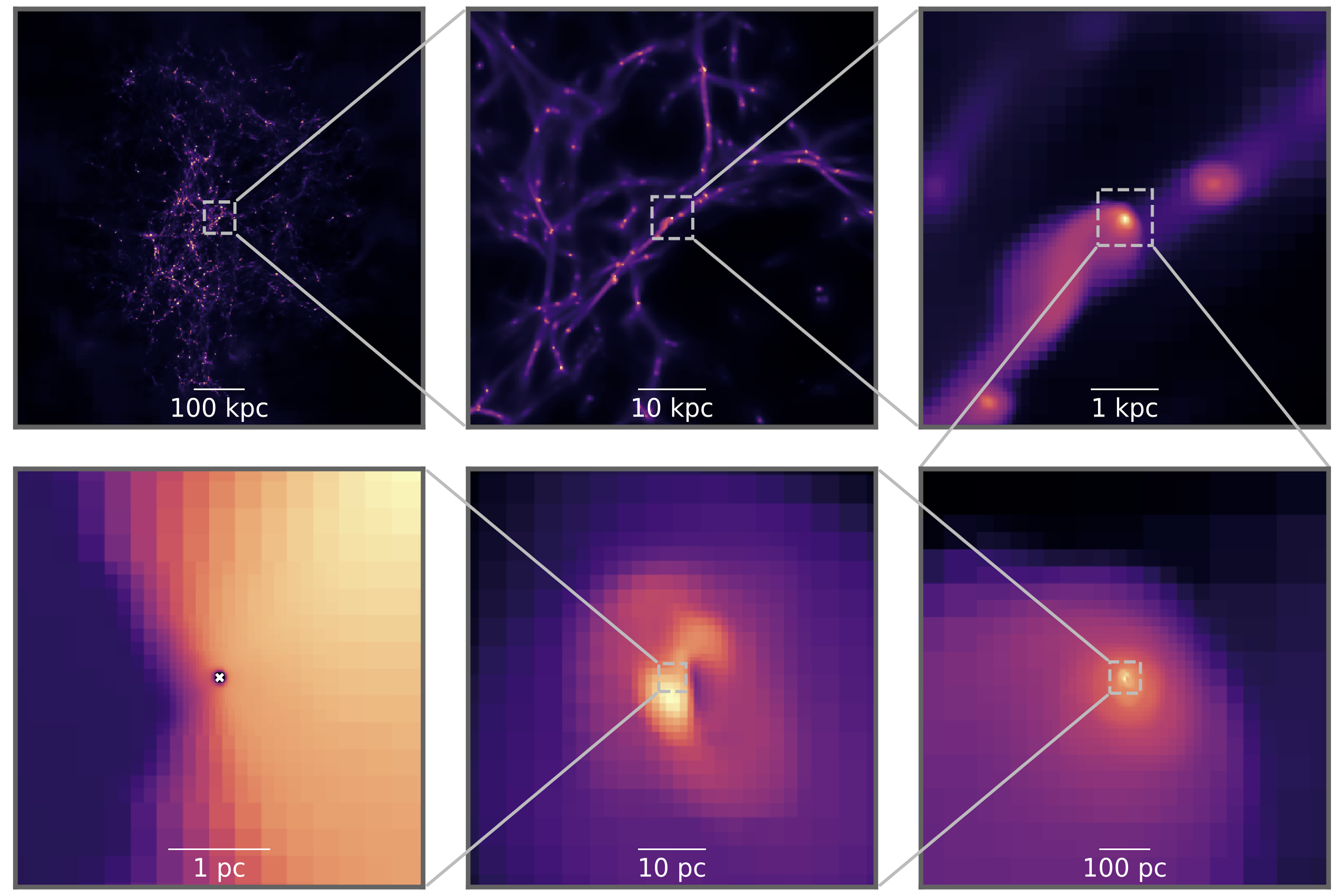
The coevolution of massive black holes and their host galaxies
Over their lifetime, supermassive black holes and their host galaxies show a remarkable correlation between their properties. This is due to feedback energy releassed by massive black holes as they grow, which both regulates the growth of the black hole and reduces the star formation in the host galaxy.
Image: Horizon-AGNPaper: "Cosmic evolution of stellar quenching by AGN feedback: clues from the Horizon-AGN simulation" Paper: "Evidence for non-merger co-evolution of galaxies and their supermassive black holes" Paper: "Supermassive black holes in merger-free galaxies have higher spins which are preferentially aligned with their host galaxy"

